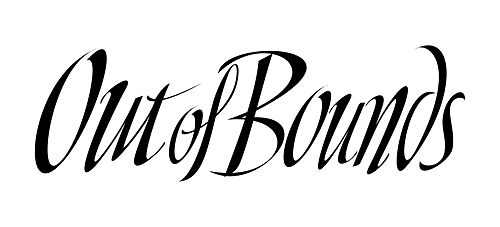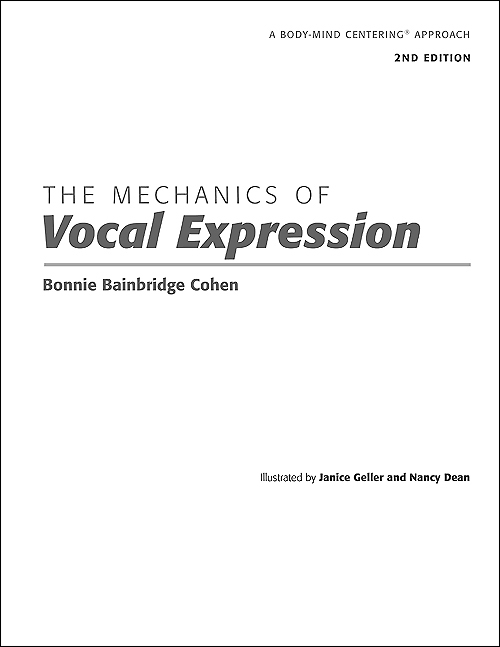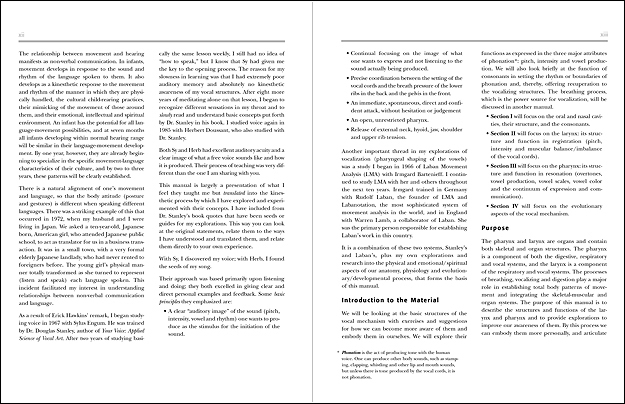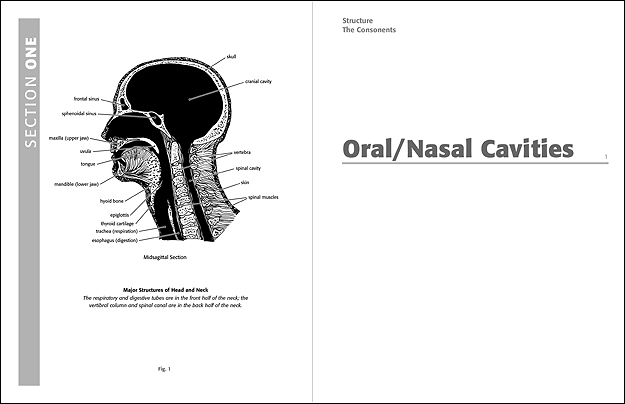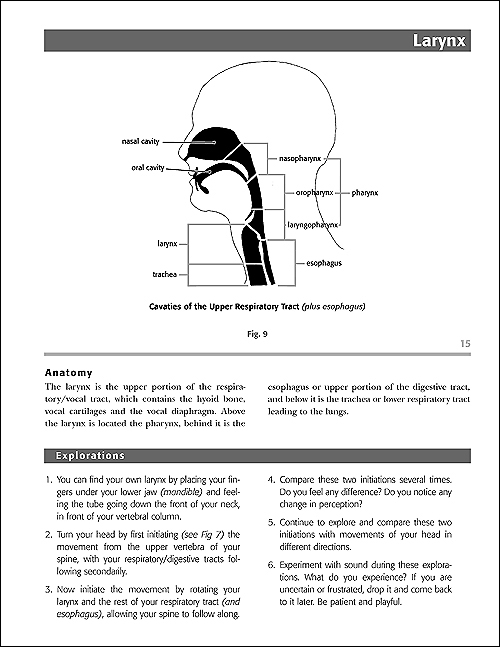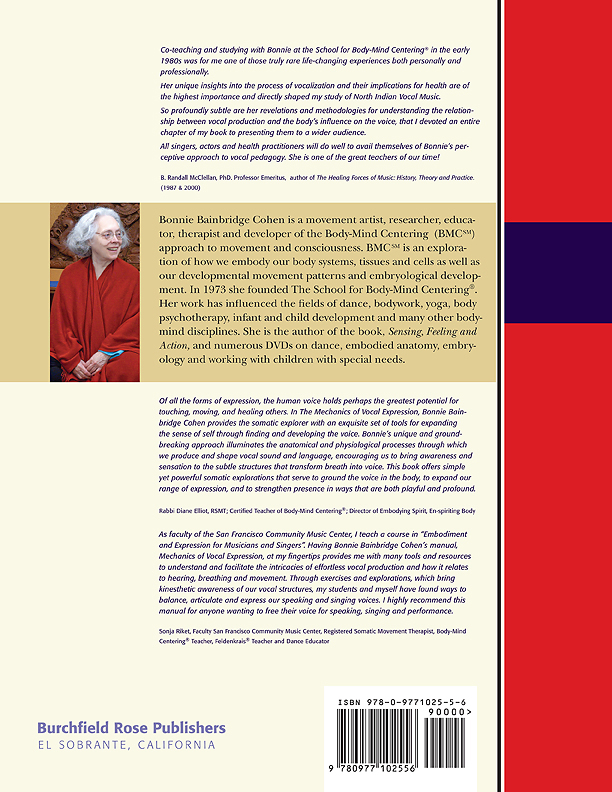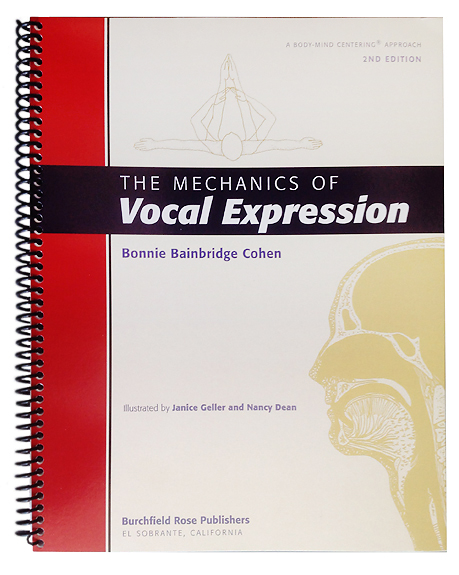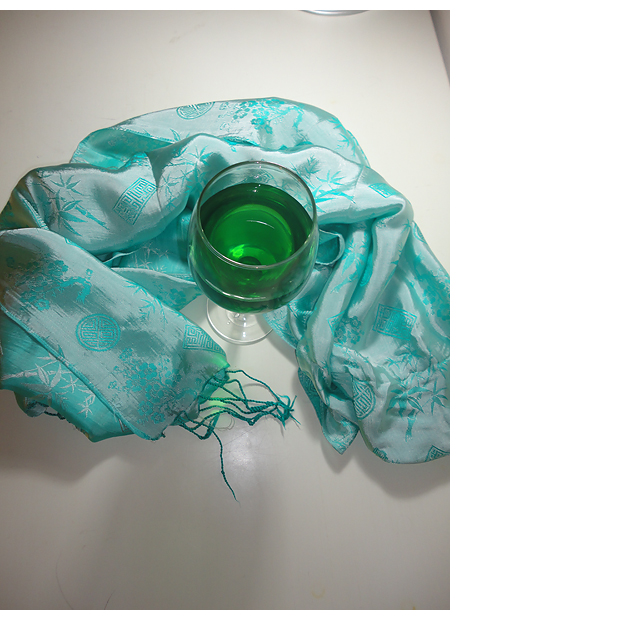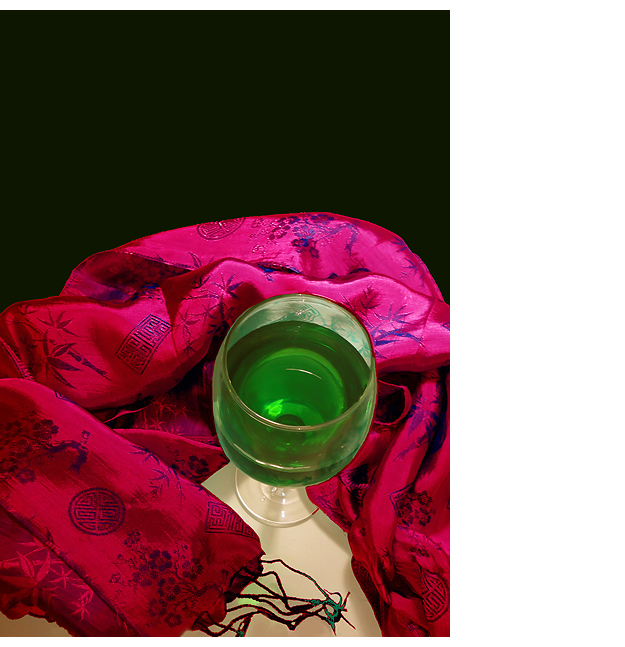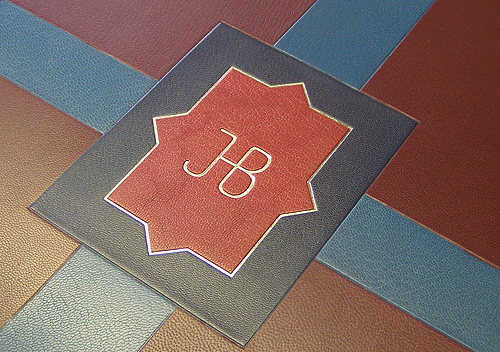
This is a closeup of the back of one of the two boxes Peter created from boards and leather
What I love most about my business is working with clients on projects i would have never conceived of.
Peter Geraty of Praxis Bindery in Easthampton, Mass. contacted me last January about a project he was working on building a leather bound box, two actually, that would house the plates and text from a rare photographic volume on oriental carpets crafted before 1800. One box would house the large photographic plates and the other the text. Both boxes would need to be roughly 20″ x 30″. The design concept of the two boxes was mostly that of Peter’s client, which Peter then would realize in boards, papers, leathers and hot stamping.
This required a lot of back and forth, fine tuning the design application. In order to facilitate that process, Peter asked If, given precise measurements, I could create a full size version of the design on the computer. Since Peter’s client lived out of state, this digital version of the design would allow both to better communicate and make adjustments to the design elements. I assured him that this was possible, so I left that meeting carrying a full size, hand executed, line drawing of the box exteriors marked with exact measurements in millimeters.
Using Adobe Illustrator, I was able to build a full size accurate version of the boxes showing all the design elements. Once he approved this line rendering, I was able to begin the work of making a full color simulation of how the boxes would appear when completed.
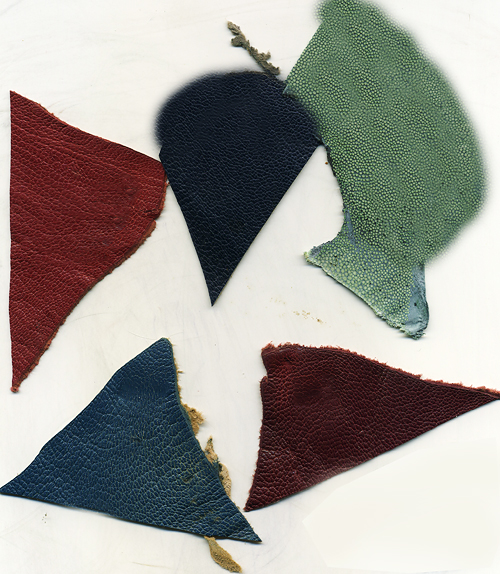
Toward that end Peter gave me swatches of the dyed leathers he had chosen for the project along with hand lettered headlines that were to appear on the cover and spine. The latter was commissioned by the client from lettering artist Stephen Rapp referencing lettering from the time period in which the book had been published.

From the swatches I was able to build large samples showing both the texture and color of the particular leathers that I could apply to the elements in the design. I was also able to isolate the individual letters in a word and fill those with a simulation of the palladium leaf that would be hot stamped into the leathers.
I applied the color textures to the full size layout and then was able to position the palladium letters onto the leathers in such a way that I could easily adjust them as the design evolved. Because I was working at full size, Peter would also be able to take precise measurements regarding the positioning of the stamp dies.

Above is the final file I created, front, back and spine of one of the two boxes. Below is a closeup showing the simulated texture
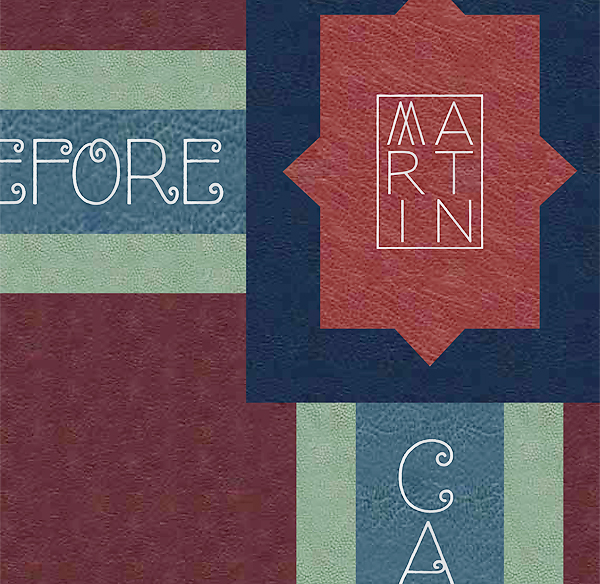
Once completed and approved, Peter was able to email his client an accurate file showing how the design would be realized. After some back and forth and a few small revisions, full size prints were made so that the client could get a sense of scale and Peter could have an accurate reference tool as he began hand building the boxes.
One bonus aspect of this undertaking was that I was able to provide the die maker for the hot stamping with accurate files for the dies. Typically, when I do this kind of accurate simulation, the files can be used for actual production. In this instance, the production was all done by hand and with such expertise that I was awestruck by the finished product.


Above is the finished cover of one box and below that the front cover of one box and the back cover of the other are seen
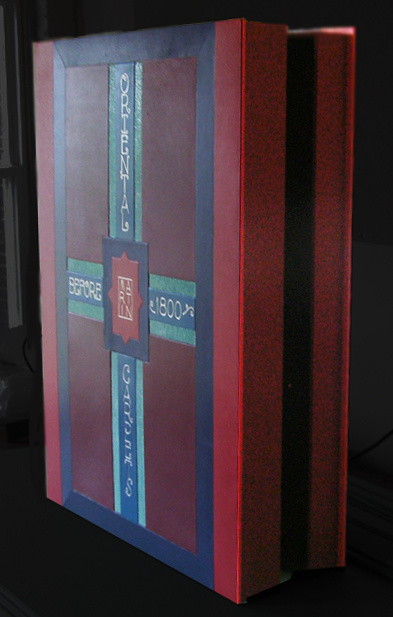
This photo shows the finished box within which the plates or text of the rare volume would be housed.


